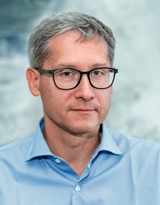Mathematical Model of the Workplace of Measuring Instruments Verification as a Non-Stationary Service System
https://doi.org/10.17586/0021-3454-2022-65-10-701-711
Abstract
A model of the workplace for measuring instruments verification as a non-stationary service system with relative priorities of the incoming flow of applications is presented. The model is based on a multidimensional graph construction and corresponding system of Chapman—Kolmogorov equations. The model makes it possible to identify and explain the main patterns and technological parameters of workplace functioning at a qualitative level. The presented model can be used to calculate the throughput of incoming measuring instruments operating under conditions of varying workload over a certain time interval. It is also possible to use the model to substantiate technical requirements when designing workplaces that are supposed to be used in conditions of changing workload.
About the Authors
D. S. ErshovRussian Federation
Denis S. Ershov — PhD, Department of Standardization,Metrology, and Certification; Research Department
Moscow; Mytischi
R. Z. Khayrullin
Russian Federation
Rustam Z. Khayrullin — Dr. Sci., Research Department; Department of Fundamental Education
Moscow; Mytischi
References
1. Kampen J.K. Measurement, 2019, vol. 137, pp. 428–434, https://doi.org/10.1016/j.measurement.2019.01.083.
2. Chen H.B., Zhuang H.L. Vibroengineering PROCEDIA, 2017, vol. 15, рр. 128–133, http://dx.doi.org/10.21595/vp.2017.19358.
3. Wei W., Wei X., Jiankang L. Physica A: Statistical Mechanics and its Applications, 2021, vol. 582, рр. 126246, https://doi.org/10.1016/j.physa.2021.126246.
4. Neama S., Youssef T. Heliyon, 2021, vol. 7, рр. e07717, https://doi.org/10.1016/j.heliyon.2021.e07717.
5. Khayrullin R.Z., Zakutin A.A. Measurement Techniques, 2021, vol. 63, pр. 862–869, https://doi.org/10.1007/s11018-021-01872-x.
6. Bessiere P., Mazer E., Ahuactzin J.M., Mekhnacha K. Bayesian Programming, CRC Press, Boca Raton, 2014, https://doi.org/10.1201/b16111.
7. Yan Su, Junping Li, Operations Research Letters, 2020, no. 3(48), pp. 317–322, https://doi.org/10.1016/j.orl.2020.04.002.
8. Seenivasana M., Senthilkumara R., Subasrib K.S. International Conference on Advances in Materials Science, 2022, no. 8(51), pp. 2332–2338, https://doi.org/10.1016/j.matpr.2021.11.567.
9. Khinchin A.Ya. Raboty po matematicheskoy teorii massovogo obsluzhivaniya (Works on the Mathematical Theory of Queuing), Moscow, 1963, 236 р. (in Russ.)
10. Gnedenko B.V., Kovalenko I.N. Vvedeniye v teoriyu massovogo obsluzhivaniya (Introduction to Queuing Theory), Moscow, 1966, 432 р. (in Russ.)
11. Bubnov V.P., Safonov V.I. Razrabotka dinamicheskikh modeley nestatsionarnykh sistem obsluzhivaniya (Development of Dynamic Models of Non-Stationary Service Systems), St. Petersburg, 1999, 64 р. (in Russ.)
12. Bubnov V., Tyrva A., Eremin A. Informatics and Automation (SPIIRAS Proceedings), 2014, no. 37, pp. 61–71. (in Russ.)
13. Smagin V.A., Gusenitsa Ya.N. Proceedings of the Mozhaisky Military Space Academy, 2015, no. 649, pp. 56–53. (in Russ.)
14. Bubnov V.P., Safonov V.I., Shardakov K.S. Systems of Control, Communication and Security, 2020, no. 3, pp. 65–121. (in Russ.)
15. Bubnov V.P., Eremin A.S., Sergeev S.A. Informatics and Automation (SPIIRAS Proceedings), 2015, no. 1(38), pp. 218–228. (in Russ.)
Review
For citations:
Ershov D.S., Khayrullin R.Z. Mathematical Model of the Workplace of Measuring Instruments Verification as a Non-Stationary Service System. Journal of Instrument Engineering. 2022;65(10):701-711. (In Russ.) https://doi.org/10.17586/0021-3454-2022-65-10-701-711





























